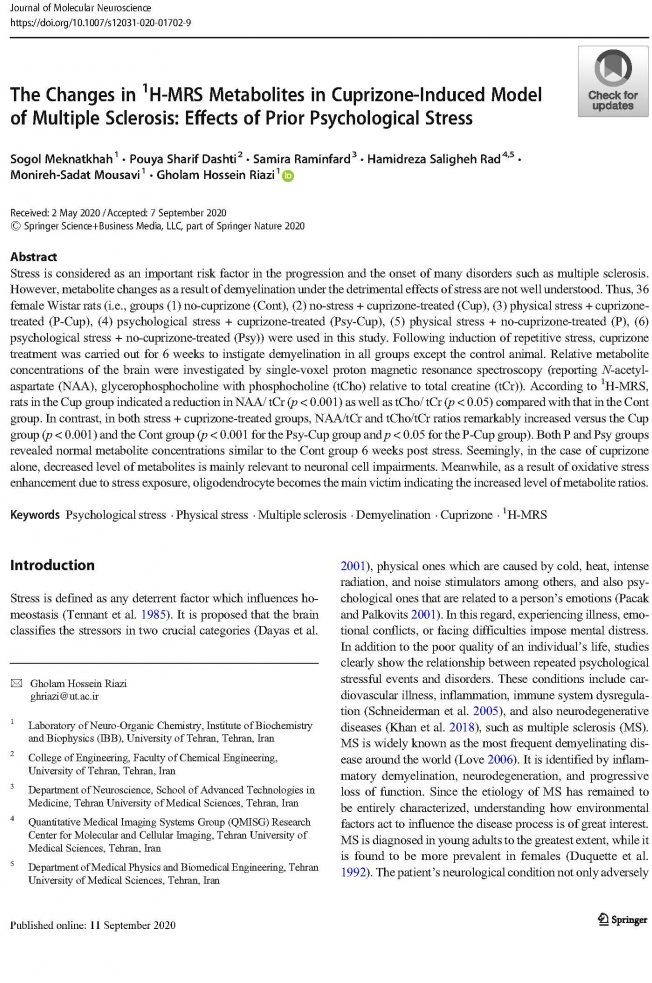The Changes in 1 H-MRS Metabolites in Cuprizone-Induced Model of Multiple Sclerosis: Effects of Prior Psychological Stress
Abstract
Stress is considered as an important risk factor in the progression and the onset of many disorders such as multiple sclerosis. However, metabolite changes as a result of demyelination under the detrimental effects of stress are not well understood. Thus, 36 female Wistar rats (i.e., groups (1) no-cuprizone (Cont), (2) no-stress + cuprizone-treated (Cup), (3) physical stress + cuprizone-treated (P-Cup), (4) psychological stress + cuprizone-treated (Psy-Cup), (5) physical stress + no-cuprizone-treated (P), (6) psychological stress + no-cuprizone-treated (Psy)) were used in this study. Following induction of repetitive stress, cuprizone treatment was carried out for 6 weeks to instigate demyelination in all groups except the control animal. Relative metabolite concentrations of the brain were investigated by single-voxel proton magnetic resonance spectroscopy (reporting N-acetyl-aspartate (NAA), glycerophosphocholine with phosphocholine (tCho) relative to total creatine (tCr)). According to 1H-MRS, rats in the Cup group indicated a reduction in NAA/ tCr (p < 0.001) as well as tCho/ tCr (p < 0.05) compared with that in the Cont group. In contrast, in both stress + cuprizone-treated groups, NAA/tCr and tCho/tCr ratios remarkably increased versus the Cup group (p < 0.001) and the Cont group (p < 0.001 for the Psy-Cup group and p < 0.05 for the P-Cup group). Both P and Psy groups revealed normal metabolite concentrations similar to the Cont group 6 weeks post stress. Seemingly, in the case of cuprizone alone, decreased level of metabolites is mainly relevant to neuronal cell impairments. Meanwhile, as a result of oxidative stress enhancement due to stress exposure, oligodendrocyte becomes the main victim indicating the increased level of metabolite ratios.

